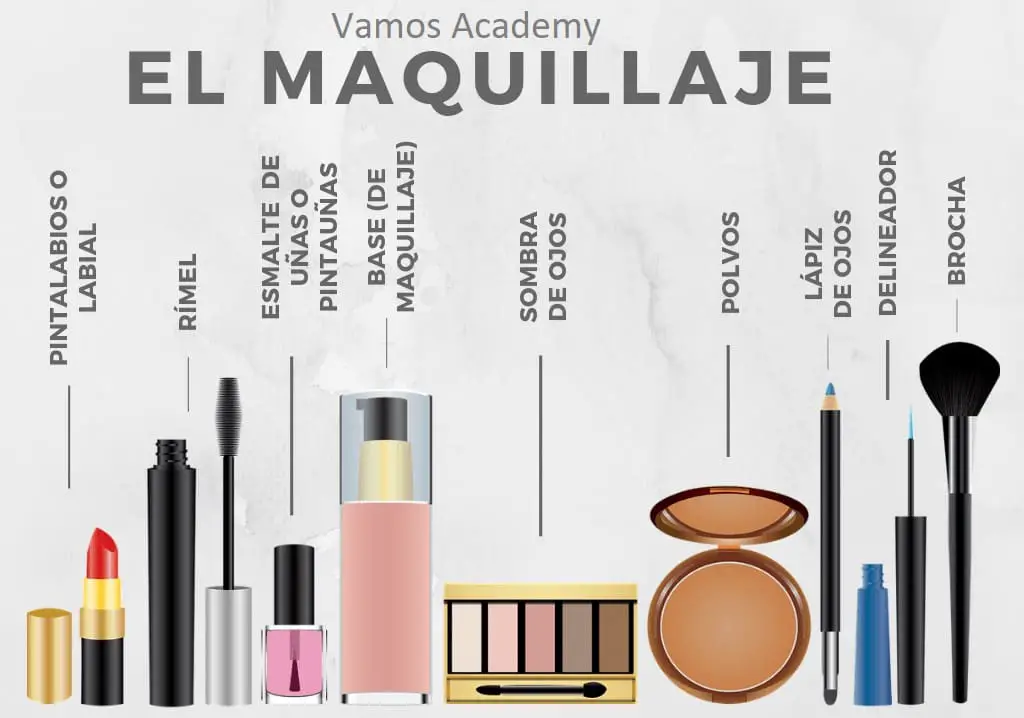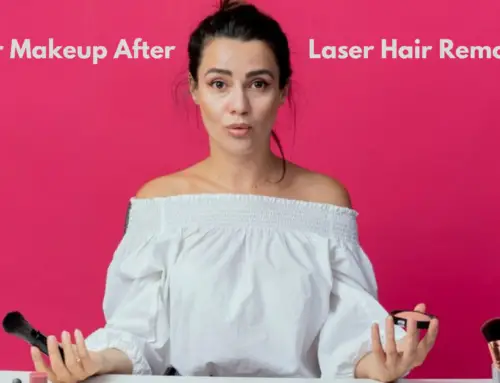When it comes to beauty and cosmetics, language plays a crucial role in communicating and understanding different terms. One such term is “makeup.” Have you ever wondered how to say makeup in Spanish? It’s a fascinating journey that takes us into the world of language and cultural nuances.
In Spanish, the word for makeup is “maquillaje.” This term has its roots in the French language, as makeup was originally introduced to Spain through French fashion and beauty trends. Today, “maquillaje” is widely used in Spanish-speaking countries to refer to the products and techniques used for enhancing one’s appearance.
If you’re looking to say “makeup” in Spanish, the word you’re looking for is “maquillaje.” It’s pronounced as mah-kee-yah-hey. This term is commonly used in Spanish-speaking countries to refer to cosmetics and beauty products. So the next time you’re shopping for makeup in a Spanish-speaking country or speaking with someone who speaks Spanish, you can confidently use the word “maquillaje.”

How Do You Say Makeup in Spanish?
Makeup is a universal language that transcends borders and cultures. Whether you’re traveling to a Spanish-speaking country or simply want to expand your language skills, knowing how to say “makeup” in Spanish can be incredibly useful. In this article, we’ll explore the different ways to express this term in Spanish and delve into the world of makeup vocabulary in the Spanish language.
1. How to Say Makeup in Spanish
When it comes to translating “makeup” into Spanish, there are a couple of words you can use:
- Maquillaje: This is the most common and widely used word for “makeup” in Spanish. It encompasses a broad range of cosmetic products and techniques.
- Maquillaje facial: If you want to specify that you’re referring to facial makeup, you can use this phrase. It focuses specifically on the cosmetics applied to the face.
2. Makeup Vocabulary in Spanish
Now that we know how to say “makeup” in Spanish, let’s explore some common makeup vocabulary in the Spanish language:
| English | Spanish |
| Foundation | Base de maquillaje |
| Lipstick | Pintalabios |
| Eyeshadow | Sombra de ojos |
| Mascara | Rímel/Máscara de pestañas |
| Blush | Colorete/Rubor |
| Eyeliner | Delineador de ojos |
| Concealer | Corrector |
| Highlighter | Iluminador |
| Bronzer | Colorete/Polvo bronceador |
3. Tips for Using Makeup Vocabulary in Spanish
Here are a few tips to keep in mind when using makeup vocabulary in Spanish:
- Practice pronunciation: Take some time to practice pronouncing the Spanish words for different makeup items. This will help you feel more confident when using them in conversations.
- Expand your vocabulary: In addition to the words mentioned earlier, try to learn other makeup-related terms in Spanish. This will allow you to express yourself more effectively when talking about specific products or techniques.
- Learn from native speakers: If you have the opportunity, engage in conversations with native Spanish speakers who are passionate about makeup. They can provide valuable insights and teach you additional vocabulary that may not be as commonly used.
4. Benefits of Learning Makeup Vocabulary in Spanish
Learning makeup vocabulary in Spanish not only allows you to effectively communicate in a different language but also brings several benefits:
- Enhanced travel experiences: When traveling to Spanish-speaking countries, knowing makeup vocabulary can help you communicate with locals, find specific products, and even ask for recommendations.
- Professional opportunities: If you’re interested in pursuing a career in the beauty industry, being bilingual and knowledgeable about makeup in different languages can open doors to new job opportunities.
- Cultural appreciation: Learning about makeup vocabulary in Spanish allows you to appreciate the diverse beauty traditions and trends in Spanish-speaking countries.
How Can I Practice Using Makeup Vocabulary in Spanish?
Now that you know how to say “makeup” in Spanish and have learned some essential makeup vocabulary, it’s time to put your knowledge into practice. Here are a few suggestions:
- Create flashcards: Make flashcards with English words on one side and their Spanish translations on the other. Test yourself regularly to reinforce your memory.
- Watch makeup tutorials in Spanish: Look for makeup tutorials on YouTube or other platforms that are in Spanish. This will expose you to spoken Spanish and help you understand how certain makeup techniques or products are discussed.
- Practice with a language partner: Find a language partner who is a native Spanish speaker and share your interest in makeup. You can take turns discussing different products, techniques, and trends in both languages.
How Do You Say “Makeup” in Spanish?
- Makeup is translated as “maquillaje” in Spanish.
- The word “maquillaje” is pronounced as “ma-kee-ya-he” in Spanish.
- When asking “How do you say makeup?” in Spanish, you can say “¿Cómo se dice ‘maquillaje’ en español?”
- To describe makeup products, you can use the phrase “productos de maquillaje” in Spanish.
- In Spanish, the word for “makeup artist” is “maquillador/a”.
Frequently Asked Questions
Are you wondering how to say “makeup” in Spanish? Look no further! Here are some commonly asked questions and their answers to help you understand the translation of the word “makeup” in Spanish.
1. What is the Spanish translation of “makeup”?
The Spanish translation of “makeup” is “maquillaje”.
In Spanish, “maquillaje” refers to the cosmetics and beauty products used to enhance one’s appearance, such as lipstick, foundation, and mascara.
2. How do you pronounce “maquillaje”?
“Maquillaje” is pronounced as “mah-kee-yah-heh” in Spanish.
Remember to stress the second syllable, “kee”, and pronounce the “j” sound in the Spanish way, similar to the “h” in the English word “hello”.
3. Can you give me an example sentence using “maquillaje”?
Of course! Here’s an example sentence using the word “maquillaje”:
“Me gusta comprar maquillaje nuevo para probar diferentes looks.” (I like to buy new makeup to try different looks.)
4. Are there any variations of “makeup” in the Spanish language?
Yes, there are variations of “makeup” in Spanish depending on the region or country. In some Latin American countries, the term “pintura de cara” or “pintura facial” is also used to refer to “makeup”. However, “maquillaje” is the most commonly used term across Spanish-speaking regions.
It’s always a good idea to be aware of these variations to better understand the local terminology when traveling or interacting with Spanish speakers from different regions.
5. What are some related words or phrases in Spanish that are associated with “makeup”?
Here are some related words and phrases in Spanish that are associated with “makeup”:
– Lipstick: “pintalabios”
– Mascara: “rimel”
– Foundation: “base de maquillaje”
– Eyeshadow: “sombra de ojos”
These are just a few examples, but there are many more words and phrases you can explore to expand your vocabulary related to “makeup”.

How to say Makeup in Spanish
In summary, the word for “makeup” in Spanish is “maquillaje”. It is used to refer to cosmetics and beauty products that are applied to enhance one’s appearance.
Knowing this word can be helpful when traveling to Spanish-speaking countries or communicating with Spanish speakers about beauty and cosmetics.






Leave A Comment